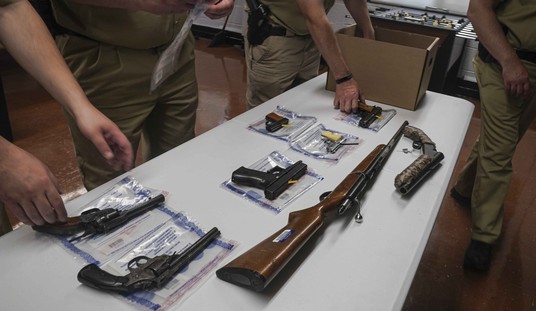Key things to consider when purchasing new binoculars
Maybe this is the year you decide to upgrade your optics with a new pair of binoculars.
Flipping through catalogs from the sporting goods stores of your choice, or doing searches online, it is easy to get overwhelmed with specifications, jargon, and highlighted features that mean nothing to the average hunter without a degree in optical physics. What we will discuss here are some concepts like basic specifications, exit pupil, and body design. The goal is help you understand these concepts a little better so when the time comes to make that purchase you are comfortable with what your needs are and what you can do to find a product to meet those needs.
Binocular specifications typically start with designation of magnification and objective lens diameter. Everyone has seen the listings that read “8×42 binocular,” but what exactly does that mean to the user? The magnification is simple, you will see things as if they were eight times closer. While the objective diameter may seem straightforward, you can glean much more information than it first appears. The objective lens diameter (the “42” in our “8×42” example) helps determine several important factors, chief among them is the “exit pupil.”
Without getting too technical, under normal circumstances your eye is capable of processing the most information when the pupil is dilated to around 7mm, though full function of the eye can be achieved below that. Any more than that and your eye doesn’t process the full amount of information, any less and you begin to lose the ability to focus, see colors, or distinguish edges.
The simplest way to calculate the exit pupil of any optic is to divide the objective lens by the magnification. Doing this we find that an 8×42 design delivers an exit pupil around 5.25mm, fairly close to the optimal range for most people’s eye. The general rule of thumb for hunting optics is to keep your exit pupil above 4mm whenever possible. Staying at or above 4mm ensures that your eye receives enough light to make your target or quarry visible, even during the low light of dawn and dusk.
What does all of that mean to you? It depends on how you plan to use the binoculars. If you will be shooting prairie dogs in broad daylight, an exit pupil less than 2mm (15x56mm binoculars) isn’t likely to cause you problems. There will be plenty of light in those conditions, therefore image quality is not likely to suffer. That same pair of binoculars for hunting whitetails in low light conditions is likely to leave you disappointed when it matters most.
You will also need to choose between a roof prism and porro prism body style. Both styles offer their own benefits.
A roof prism binocular is going to be more compact, therefore easier to carry around in your pack or maneuver with in a tree stand. Porro prism designs will produce a wider field of view than comparable roof prism designs, as well as a brighter image because of the materials used in construction. Porro prism binoculars are typically more affordable than directly comparable roof prisms because the construction process of porro designs is less labor intensive.
At the end of the day, choosing a body design is strictly a personal decision. Either one will function perfectly well in most circumstances, but one design is probably more tailored to your personal use. Will they be used primarily as a scouting tool from your truck where the bulk of a porro design won’t cause issues and the wider field of view will come in handy when glassing bean fields at dusk? Or do you need a pair of binoculars for your turkey vest where size is a factor, and the ability to move around quickly to out-run a big tom more closely meets your needs?
Now we need to address magnification needs.
Let’s start by dispelling the notion that more is better. The natural inclination is to get all the magnification that you can, but this can cause several problems. First of all, assuming the same objective lens diameter, the higher the magnification the smaller your exit pupil, this directly affects your ability to see clearly in low light conditions. Secondly, not only will the object you are viewing be magnified eight, ten, or twelve times, but so will every move you make.
The higher the magnification the more difficult it is to maintain proper image stability, the sway of the tree you are in, and even your heart beat become a factor. Lastly, you may just not need a high magnification. Antelope hunting in eastern Wyoming is quite different from black bear hunting in northern Wisconsin. If you need quick subject acquisition at varying distances, you will likely be best served with something around 8x magnification. For long distance glassing or detailed evaluation of trophy quality you can start to look at the 10x and 12x magnification options.
With design and magnification settled, we move on to objective diameter. Desired exit pupil is a factor here, but so is size. You are looking at a difference of almost 25% on body tube size when evaluating your choices. If your needs hinge more on a compact, space saving design, go smaller. On the other hand, if you are looking for all the light you can get, and are willing to leave an extra granola bar home to make room in your pack, opt for the larger size.
Of course there are other factors that can come into play. Glass quality is paramount among them. Binoculars are offered with standard, as well as ED (extra-low dispersion) glass. There is a significant price increase when you look at moving to ED glass, but there are also significant benefits. Anytime light passes through a lens it is dispersed to some degree. The composition and design of ED glass reduces that dispersion and by doing so, delivers sharper images with virtually no color diffusion or yellowing, in addition to crisp edges and improved depth of field.
While this list of items to consider is nowhere near complete, it should provide a solid base to knowledge to start your research.







Join the conversation as a VIP Member